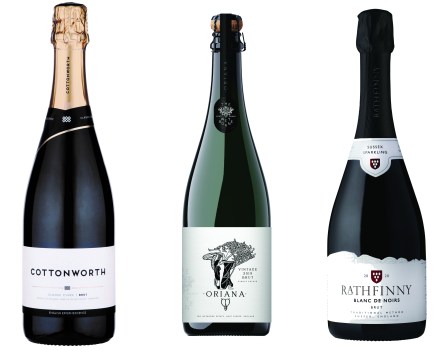• www.matthewjukes.com • vineyard.ed@kelsey.co.uk
I drink an awful lot more still wine than I do sparkling. I have never really considered what the ratio is exactly, but if I opened more than one bottle of fizz per fortnight I would be surprised.
I don’t think that this is unusual either. With our homegrown industry focussing so heavily on sparkling and with prices generally starting around the £25-mark, save for the own-label high street brands, if most peoples’ habits are broadly similar to mine we will need to celebrate quarterly birthdays and encourage hordes of deep-pocketed fizz fans to prevent our sparkling industry from grinding to a halt.
This is why a healthy mix of both still and sparkling wines is fundamental to our industry’s collective success. We need a good number of reputable wineries making whites, rosés and, dare I say it, a few reds, too, under a tenner and widely available and then we need to pack the sub-fifteen mark with even more finely tuned creations.
While a ‘wine list’ of reliable, great value, modern wines, available within an arm’s reach of most consumers, will take a good few years to come together, there are already very encouraging signs out there that there is the ambition and determination to make this work. Overleaf I have picked out a modern classic, a true fine wine and a cheeky debut act to show that with serious knowledge, quick thinking and a genuine desire to keep challenging the consumer anything is possible in our industry.

£13.00
Waitrose
Morrison
Coop
This is a wine which I am sure that everyone who reads this august publication will be very familiar with.
So why am I using up precious ink on Flint Dry, after all it already has a well-established footprint firmly stamped into our market? The answer can be seen all around the wine world. Great brands, like Torres, Penfolds and Guigal, with superb, affordable wines in their portfolios always seem to impress, year in year out, but the only way that they can do this is by continually improving. This ruthless pursuit of intrinsic deliciousness is to be admired and these wines act as ambassadors for their entire portfolios. If we could compare Flint Dry from a decade ago to the Flint Dry today, they are wholly different wines and this shows incredible progress. The bottom line is that this complex blend of grapes and soil types is one of the country’s most energetic, affordable and ever-evolving wines. The zesty fruit, cut with exotic flashes and bright, electric-green tanginess make many other wines look dowdy and sluggish, so hats off to Flint Dry.

Boot Hill Vineyard
£25.00
www.gusbourne.com;
Approx. £30.00
www.fortnumandmason.com
www.beckfordbottleshop.com
www.butlers-winecellar.co.uk
www.tivoliwines.co.uk
Like Flint Dry, Guinevere is a wine which has improved year on year. Unlike Flint Dry, it has only been around for a few vintages and so while this is one of the most impactful white wines in the country we are only just starting to understand the potential of this style from Gusbourne.
Another point of difference is that while Flint Dry is made to a style and price point Guinevere, I suspect, will be allowed to go anywhere it wants over time. In ten years, there may well be a hierarchy of Chardonnays at this estate – village, premier cru and even grand cru – if the vineyards perform. This makes the future of Guinevere and other still wines at this estate very exciting indeed. I have always loved this wine, noting two years ago that the 2014 vintage was a ‘grand and daring’ release. While the 2014’s exuberance made up for some of its lack of polish, the 2017 is sublime. Like a lusty, young Saint-Aubin, the fruit is exquisite and the oak management, these days, is what makes this such an impactful wine. Strident, powerful and firm, this needs a year or two to mellow but it is a bold statement of intent and I think the value for money here is extraordinary.

£84.00 for six bottles,
£14.00 each,
free delivery for two cases
www.hattingleyvalley.com
While the other two wines on this page have been fine-tuned and much deliberated over, this blossom fresh rosé is a first still wine release ever at Hattingley and it shows just how astute and instinctive winemaker Emma Rice is when it comes to making seat of the pants decisions with her wines.
A few years ago she asked a grower to plant some Pinot Noir Précoce, or Frühburgunder as they call it in Germany. This early-ripening mutation of Pinot Noir is a useful variety in our cool climate and it was intended to ensure that Hattingley had continuity of supply for their famous sparkling Rosé, which is made by blending red wine made from this variety. They realised a great crop in 2019 and so they harvested more than anticipated. The sheer calibre of ripe fruit was such that the wine in tank, as it fermented, was so delicious and fruity they did not need to chaptalise. Emma has always said that she would make a still wine if the grapes were ripe enough. They made 1300 six-packs, earmarked for a couple of restaurant customers, but as Covid-19 struck, the plan had to be changed. Bottled three days before ‘lockdown’, they decided to sell it directly to consumers from their website, and a voucher scheme was drawn up for lucky customers to spend in the restaurants who have missed out on listing this wine. A great story, a great wine and stunning ingenuity, too.




